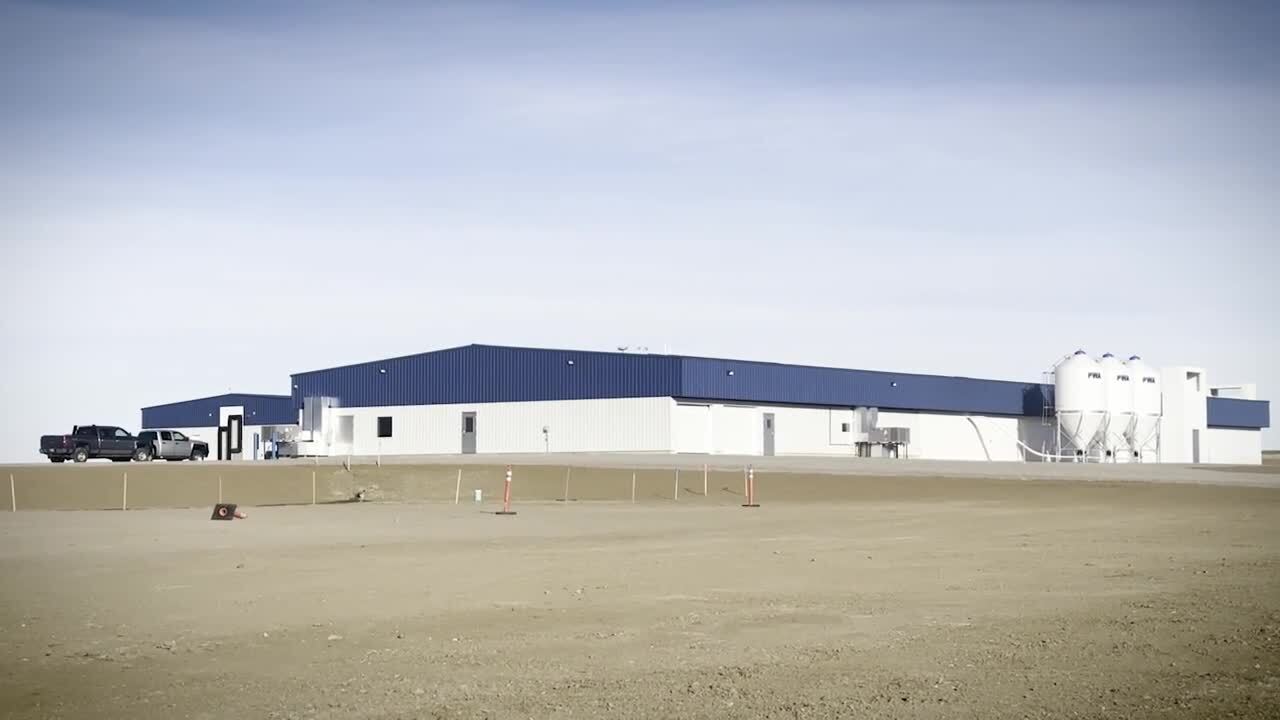Montana’s pork industry just hit a historic milestone with the opening of the state’s first-ever boar stud facility — a state-of-the-art, biosecure operation built to supply Montana farms with a safe, efficient, and high-quality source of boar semen.
Owned by Montana’s Hutterite colonies, the land for the new facility outside the town of Cascade was leased and developed in partnership with Pork Storks of Montana. The project marks a major step forward for the state’s agricultural independence, allowing Montana producers to rely less on out-of-state sources for genetics while improving herd health, stability, and profitability.
Brianna Juneau reports - watch the video here:
The facility will house 412 mature boars, capable of producing genetic material for over 100,000 new litters each year. Thirty-five Hutterite farms across the state will receive deliveries two to three times a week, keeping Montana’s pork production local and biosecure.
The project was partially funded by a Growth Through Agriculture (GTA) award, receiving the maximum amount of $150,000. The grant came with assistance from the Great Falls Development Authority’s Food & Ag Development Center.
GFDA Food Ag Development Center director Sara Niccum said the facility represents exactly the kind of forward-thinking investment the GTA program is meant to support.
“This project directly strengthens Montana agriculture by keeping high-value genetics in-state,” Niccum said. “Keeping the small businesses here strong and empowering entrepreneurs and local business owners to keep growing where they are helps us shape our identity in agriculture and as a state.”
Hutterite colonies from across the region joined forces to make the project possible, a collaboration rooted in shared values of stewardship, quality, and community health.
William Kleinsasser of the Elk Creek Colony said the goal from the beginning was to protect the wellbeing of Montanans as well as the long-term value of Montana livestock.
“We came together and we said we have to supply, we have to protect our health and our value of Montana piglets,” he explained. “One of the main drivers behind this is the value of Montana's piglets. They bring an extra $10 to $15 premium versus a Midwest piglet due to the high health.”
Joe Wipf of the Milford Colony emphasized that safety is the biggest goal. “Biosecurity is our top goal. We want to provide excellent stock that Montanans can trust.”
Before the facility is officially closed to the public, a requirement to maintain strict biosecurity, the team invited me inside for a firsthand look.
The tour made one thing clear: most people don’t realize the level of caution, planning, and sanitation required to keep a boar stud facility clean and contamination-free. Every doorway, hallway, and work area is designed to prevent outside pathogens from coming into contact with the animals. Staff follow rigid entry protocols, and all incoming supplies are sanitized.

“That’s part of biosecurity,” Wipf said, laughing as we approached another one of the many showers littered throughout the facility that prevent one room from contaminating another. “If biosecurity isn’t uncomfortable, you’re not doing it properly.”
The new build was pristinely clean from the testing lab all the way through to the holding area and quarantine rooms. Leaders say this is how the building will stay. These measures are what will give Montana producers and consumers the confidence that the stock they raise, or purchase is healthy and safe.
Kleinsasser added, “We do pride ourselves with clean facilities and good animal care and welfare. We pride ourselves on that.”
The facility’s filtration systems, isolation zones, controlled-airflow rooms, and sanitation technology mirror the kind of biosecurity found in leading national genetics centers, but tailored for Montana’s local needs.
The creation of this facility marks a turning point for the state’s swine industry, giving Montana farmers reliable access to high-quality genetics and protecting them from disease risks linked to out-of-state imports. It keeps money in Montana, raises the quality of livestock produced here, and builds a foundation for long-term agricultural growth.
Niccum said the facility is proof of what can happen when innovation, collaboration, and rural leadership come together. “We’re incredibly proud to help support a project that will benefit Montana producers."
Mirroring that statement, Kleinsasser said, “I think going forward, this project will be enjoyed for hopefully for many generations to come.”
For Montana’s Hutterite colonies and pork producers, the message is clear: the state is taking control of its agricultural future; one healthy, high-quality piglet at a time.


